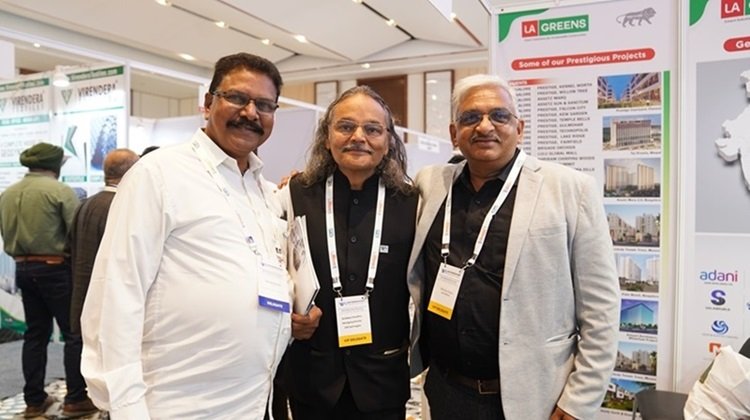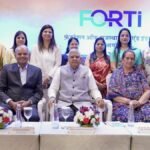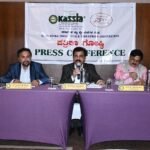– By Tanisha Saxena
When Samir Surlaker, Director of Assess Build Chem Private Limited, addressed a gathering of construction industry leaders in Gurgaon, his message was clear: “Waterproofing is required when the water starts falling on the roof, not when it starts leaking.” His statement captured a fundamental, often neglected truth—waterproofing is not a fix, but a preventive measure that can determine the lifespan of any building.
This message was at the heart of the first-ever National Waterproofers Conference & Exhibition, held in Gurgaon, Haryana, in late September. The event, organised by the Waterproofers Association of India (WAI), brought together 300 industry professionals, manufacturers, and international experts to address the vital yet underappreciated role that waterproofing plays in modern construction.
The Importance of Waterproofing
The timing of the conference couldn’t have been more pertinent. With rapid urbanisation across India leading to a boom in construction projects, ensuring the durability and sustainability of buildings has never been more urgent. Water infiltration is one of the most common causes of structural deterioration, potentially compromising a building’s integrity within years if not properly addressed from the outset. This concern drove the gathering, where industry veterans like Surlaker and Er. K. Sriniwas Reddy, Managing Director of Bangalore-based Design Tree Consulting, warned of the irreversible damage that unchecked water ingress can cause. “Once water ingress begins, you cannot guarantee the life of the building,” Reddy emphasised, highlighting the need for a shift in how the construction industry approaches waterproofing.
A Landmark Partnership
The conference wasn’t just about awareness—it marked a significant step forward for the waterproofing sector. A landmark Memorandum of Understanding (MoU) was signed between WAI and the National Real Estate Development Council (NAREDCO), pledging to work together on improving waterproofing standards across India. The partnership aims to align waterproofing practices with broader national initiatives, such as the Green Building and Smart City programs, and to foster the development of best practices in design and construction. The collaboration also seeks to promote skill development in a niche industry that is too often overlooked in the broader construction dialogue.
WAI’s Role in Professionalizing the Industry
Sandeep Chaudhry, President of WAI, underscored the importance of the MoU, pointing out that while various industries have formal bodies advocating for better practices, the waterproofing sector had largely operated without such representation. “This conference is about bringing waterproofing to the forefront as an essential factor in building longevity and safety,” Chaudhry said. “It’s something that is often seen as an afterthought, when in fact it should be integral to the planning and construction process from the very beginning.”
Speaking with CMR, Chaudhry said, “We founded the Waterproofing Association of India (WAI) in 2017, though the official registration process took nearly a year, with the formal date falling around March or April of 2018. It’s now been about five years since our inception. Our primary goal was to unite professional waterproofers in India, a largely unregulated and fragmented industry. Unlike in the US and Europe, where certification is mandatory to work in waterproofing, India lacks any such system. Here, anyone can walk into a store, purchase waterproofing materials, and attempt the job themselves, leading to inconsistent standards across the field.”
Chaudhry established WAI with the aim of professionalising the industry through training. Last year, the association introduced certification programs, and today they have approximately 60 members. To qualify for membership, individuals must have a minimum of five years of experience, be engineers (at least the business owners), and possess a GST certificate. “We even encourage potential members to register for GST if they haven’t already. Additionally, applicants must be vouched for by two to three current members, though they don’t need to have close relationships—just enough to attest to the applicant’s credibility,” he added.
The association operates as a cohesive unit, and we work closely with manufacturers, who provide vital support for our training programs. They host training sessions across India on a monthly basis, with a strong presence in the South and North West, though they are yet to establish much activity in the East.
Innovations in Waterproofing
Speaking of the latest technologies in waterproofing, Chaudhry said, “In recent years, we’ve observed a shift among our members who initially focused on basic waterproofing techniques. Gradually, they’re adopting newer technologies and products. For instance, one of our members, an American machinery manufacturer known for advanced crack repair technology, joined us a few years ago. Five years ago, I wasn’t using equipment like that, but now, after receiving proper training and understanding the benefits, I’ve invested in that machine. The impact has been transformative. Previously, I would hesitate to take on a 40,000 square-foot job, wondering how I’d source enough labour to complete it. Today, with this advanced machinery, I can finish a project of that scale in about 15 days—something that would have taken me three months with traditional methods and manual labour. This experience has underscored the importance of embracing new products and technologies.”
He accentuated, “We also have members like M-CAMP, who have a booth here at the event. They import polyurethane and polyurea from Europe and manufacture their products in Noida. Interestingly, they export 90% of their materials internationally. It’s impressive to see the level of innovation and quality abroad, but we’re also witnessing Indian companies like M-CAMP stepping up and matching those standards, pushing our industry forward.”
Global Perspectives on Waterproofing
Beyond the MoU, the conference offered a broad spectrum of discussions on cutting-edge technologies and methods in waterproofing. Panels and presentations covered topics such as remedial waterproofing, tunnels, thermal insulation, external insulation finishing systems (EIFS), and the latest developments in coatings and machinery. Experts from India, the UAE, and Korea shared case studies and insights, demonstrating how countries around the world are grappling with the same waterproofing challenges in the face of climate change and increased construction demands.
While waterproofing may often seem like a technical detail, the stakes are far higher than many realise. Poor waterproofing not only affects the aesthetic quality of a building but can lead to severe structural damage over time. This is especially critical in India, where extreme weather conditions—from monsoon rains to rising temperatures—are becoming more frequent and more intense. As Reddy noted, “Everyone may have a different definition of waterproofing, but we all agree on its importance in ensuring the sustainability and durability of buildings.”
The event also served as a platform for collaboration among key players in the construction industry, from architects and consultants to contractors and builders. Stakeholders from government bodies and major corporations such as CPWD, RITES, IRCON, MES, and NBCC attended, facilitating conversations about how to integrate waterproofing more seamlessly into construction projects at every level. Their involvement signals a growing recognition of the need for unified efforts to ensure that buildings across India—and beyond—are equipped to withstand the test of time.
Collaboration and Awareness
Sanchit Mann, Manager (DRYTHANE DIVISION) at Amchem Products Pvt Ltd, explained, “As platinum sponsors of the event, we’ve been involved in this collaboration for the past 6-7 years. Our journey with Mr. Bajaj and Mr. Chaudhary from Group India began about 6-7 years ago, when neither of us were aware of each other’s work. They had established a large community around waterproofers, which was unknown to us at the time. Since then, we’ve continued to be a part of this partnership. This event represents the largest waterproofers-related gathering in India. Initially, their focus was more on South India, but we’ve since found common ground.”
The conference was bolstered by the support of major manufacturers like Pidilite, Amchem, and Huntsman, along with backing from industry bodies including the Construction Chemicals Manufacturers Association and the Construction Industries Development Council. These partnerships underscore the growing momentum behind the push to elevate waterproofing as a critical component of sustainable building practices.
As India continues to expand its urban footprint, the lessons from this conference serve as a timely reminder: waterproofing is not a luxury or an afterthought but a fundamental aspect of building design. Without it, even the most ambitious construction projects are at risk of crumbling under the weight of their own neglect.









